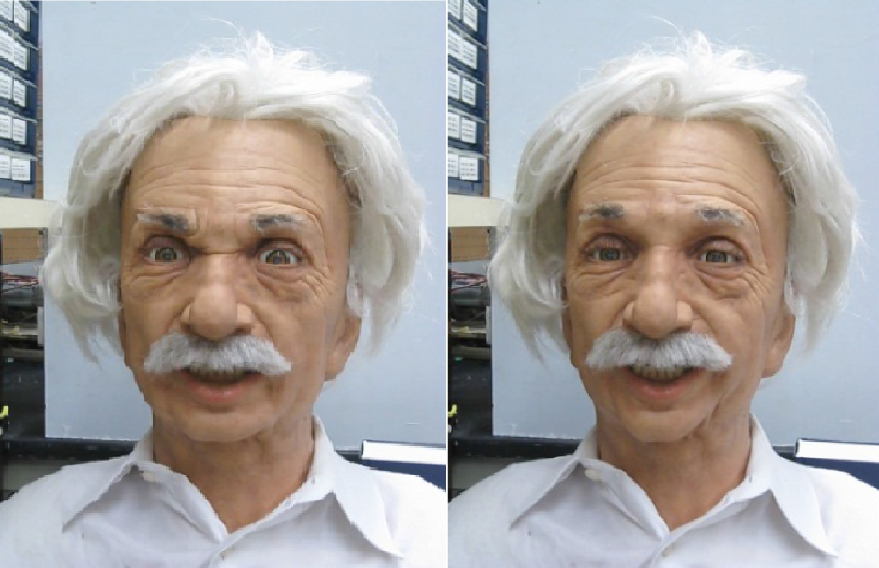Weird! Robot 'Emotions' Mirrored by Humans

Without thinking, humans tend to mimic the facial expressions of others. When other individuals smile, people smile and feel warmth. When others frown, people frown and share their sadness. This empathetic response is so strong that people might even instinctively copy the facial expressions of creepy robots, a new study suggests.
Researchers observed how students interacted with a robot made to look like physicist Albert Einstein to explore the phenomenon of facial mimicry. This instinctive human quirk, also observed in chimps, causes individuals to subconsciously mimic each other's facial expressions.
The most exciting finding was that the students spontaneously imitated the android's facial expressions even though the participants knew the robot was artificial and even though they felt uncomfortable around it, said Piotr Winkielman, a psychologist at the University of California, San Diego, who was involved in the study. This shows the power of mimicry and demonstrates the possibility that humans can interact with an artificial being in a natural way, he said. [5 Reasons to Fear Robots]
"Modern technology can now produce androids that not only look like humans, but also move their faces like humans, and thus can 'compel' humans to synchronize with them," Winkielman told Live Science. "There are all sorts of attempts now to bring in humanoid robots into health care, [the] service industry and regular homes. This study shows that these modern androids can, via mimicry, create a form of 'relation' with other human beings."
For their study, which was detailed July 18 in the journal PLOS ONE, the researchers had 23 undergraduate students sit face to face with Einstein, a lifelike android, complete with humanlike skin and the ability to stretch its face into angry or happy expressions. The students first rated how "creepy" they found Einstein, how comfortable they felt around it and how humanlike it appeared. The researchers then observed and analyzed how the students interacted with the robot.
Regardless of how they felt about the robot, the majority of the students mimicked Einstein's smiles and pouts without any initial prompts or instructions to do so. In contrast, during a control study in which Einstein appeared on a television screen, only the students who reported the robot as "lifelike" mimicked its facial expressions; they did this despite previously reporting that Einstein made them feel uneasy.
The results suggest that facial mimicry might depend on the presence of a being with humanlike facial features, Winkielman and his colleagues wrote in the study. It's this recognition of facial characteristics that people respond to and connect with — as well as the physical presence of the robot.
Sign up for the Live Science daily newsletter now
Get the world’s most fascinating discoveries delivered straight to your inbox.
"Androids that look humanlike and show humanlike movements can spontaneously 'grab' us and make us mimic them," Winkielman said.
The findings may also contribute to an understanding of how mimicry works in the brain. Spontaneous or rapid facial mimicry is thought to occur because of mirror neurons, brain cells that activate a copycat response when one person or animal observes the actions of another. The study suggests these mirror reflexes might even occur when people meet an artificial, mechanical being.
"Our data show that mimicry occurs even when people clearly do not believe that the other agent is conscious, has free will or experiences emotions — the hallmarks of an emotional being," the scientists wrote in the paper.
Future research could help scientists develop robots that can build a rapport and engage with their human users, so that the droids are better at creating companionship and comfort, Winkielman and his colleagues said.
Follow Jillian Rose Lim @jillroselim & Google+. Follow us @livescience, Facebook & Google+. Original article on Live Science.









